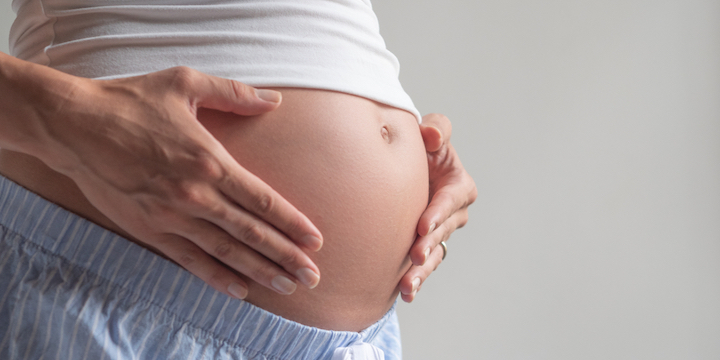It’s here “first evidence for the presence of microplastics in the human placenta“. An Italian study to appear in the newspaper Environment International reveals the presence in several placentas of microplastics, that is, tiny particles of plastic. The study’s authors, obstetrics and environmental scientists, are concerned that these pollutants, “by acting as endocrine disruptors, could have long-term effects on human health.“
Read also: Air pollution: particles found even in the placenta
Painting, packaging, cosmetics …
To perform this study, the researchers collected six placentas from female volunteers who had no complications during their pregnancy. They then analyzed them with an extremely fine microspectroscopy technique that can detect microplastics.
Result: 12 fragments of microplastic varying in size from five to 10 micrometers (10 times smaller than the diameter of a hair) were found in four placentas, both on the fetal and maternal sides.
How did they get there? All these fragments were colored in blue, red, orange and pink and seemed to come from various sources: coating, paint, adhesives, plasters, packaging, hygiene products or even cosmetics that future mothers would have used.
“It’s like having a cyborg baby”
Problem: the very small size of these microplastics means that they have the ability to pass into the blood. If researchers do not yet have formal proof that they have passed into the blood of the fetus, this possibility must be considered. “It’s like having a baby cyborg: it is no longer made up of only human cells, but a mixture of biological and inorganic entities.“, declares at Guardian Antonio Ragusa, director of the department of obstetrics and gynecology at the Fatebenefratelli hospital in Rome, who led the study.
A “very worrying” contamination
The potential effects of microplastics on human health – and in particular on children – are still very poorly understood. But “due to the crucial role of the placenta in fetal development and its interface function with the external environment, the presence of potentially harmful plastic particles is of great concern“write the researchers in their publication. They fear in particular that these pollutants affect the growth of the fetuses.
Next step, for the scientists: repeat on analysis on a greater number of placentas to confirm these initial results which only involved a very small sample. It will also be necessary to assess whether certain lifestyles or certain consumption habits reduce the amount of microplastics in the placenta.
 Cherry tomatoes contaminated with salmonella: 92 sick and 1 dead
Cherry tomatoes contaminated with salmonella: 92 sick and 1 dead  A better coaching method can make a person grow
A better coaching method can make a person grow  What is the method to prevent diabetes in children?
What is the method to prevent diabetes in children?  What are the effective factors in causing stomach ulcers?
What are the effective factors in causing stomach ulcers?  Why do embarrassing memories seem to appear at night?
Why do embarrassing memories seem to appear at night?  The amazing link between SARS-CoV-2 infection and newly started diabetes
The amazing link between SARS-CoV-2 infection and newly started diabetes  WHO says monkey pox is not a global emergency right now
WHO says monkey pox is not a global emergency right now  Single cell RNA sequencing uncovers new mechanisms of heart disease
Single cell RNA sequencing uncovers new mechanisms of heart disease  Hepatitis of unknown origin: 3 new deaths and 228 cases worldwide
Hepatitis of unknown origin: 3 new deaths and 228 cases worldwide 